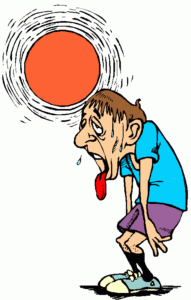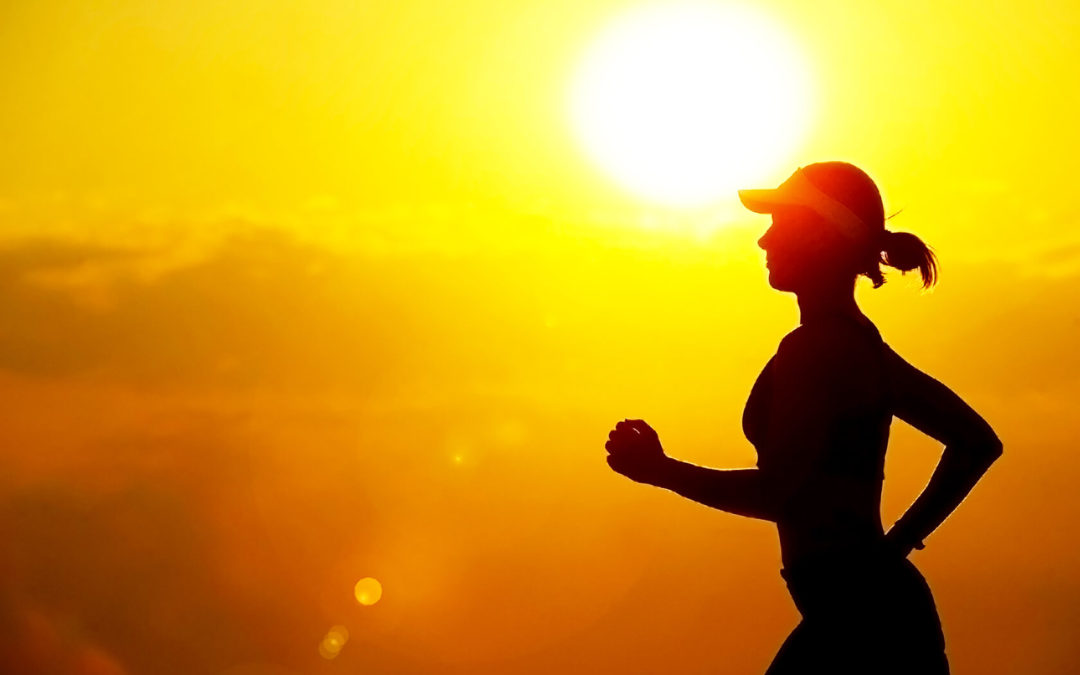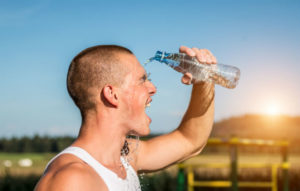Hot conditions make your body crave carbs—but that’s not a bad thing.
You know that the hot, sometimes humid weather affects your running differently than those crisp, cool October temps. During the summer, you may feel that the weather increases your perceived effort and decreases your overall performance, but do you actually burn more calories in the heat?
For instance, a 9-minute mile might feel like an easy pace in colder weather, but if you run a 9-minute mile in high heat and humidity, it feels a little harder—so will this change the ratio of fats to carbs you’re burning and increase your need for carbs?
Let’s review some basics to start. In general, you burn a mix of fat and carbs when you exercise. The more intense the exercise, the more that mix shifts toward carbs and away from fat. So the “first approximation” answer is that since running a 9-minute mile requires a higher intensity in hot conditions than in cool conditions, you’d expect to burn a higher proportion of carbs in the heat.
But
It’s much better to move to a higher intensity and get a smaller proportion of a larger total. And as you get fitter, your body’s ability to burn fat will increase, and so will the intensity at which fat burning is maximized. Here’s a graph from the above study, showing whole-body fat oxidation in the heat for trained and untrained subjects, as a function of exercise intensity:
So the goal shouldn’t be to screw around at low intensity to maximize proportional fat-burning—it should be to get fit (by training relatively hard) so that your overall rate of fat burning doubles.
The bottom line: While technically speaking, you can burn more calories in the heat because you are working at a greater intensity, the best way to ramp your fat-burning up is to get fitter. There’s no real need to worry too much about optimal fat-burning paces.
we have to ask whether the body’s fuel preferences change in hot conditions. It turns out that they do. According to a 2010 study in the journal Applied Physiology, Nutrition, and Metabolism, “exercise in the heat—40 degrees Celsius [or 104 degrees Fahrenheit]—increases muscle glycogen oxidation and reduces whole-body fat oxidation in comparison to the same exercise intensity performed at 20 degrees Celsius [or 68 degrees Fahrenheit].”
This makes the effect even more pronounced. Not only does running in the heat increase your intensity (which increases the carb-to-fat ratio), but it also increases the carb-to-fat ratio even at the same intensity.
So we can say pretty definitively that running a 9-minute mile in the heat burns a higher proportion of carbs and lower proportion of fat than running at the same pace in cooler conditions. That means that if you’re planning a long run in the heatand working out your carb needs, you might want to consider a slight increase compared to what you consume in cooler conditions. (Though, of course, I’d also recommend planning training runs based on intensity rather than pace —for example, slowing down in the heat.)

[Run faster, stronger, and longer with this 360-degree training program.]
But does this kind of thing matter if you’re trying to lose weight? Should you worry about the proportion of fat versus carbs that you’re burning, or just the total amounts? The focus on proportion is the fallacy underlying the idea that you should exercise at a low intensity to stay in the “fat-burning zone.” Sure, it’s true that sitting on an exercise bike and moving your legs slowly with zero resistance burns mostly fat—but 80 percent of 5 calories is still useless.
It’s much better to move to a higher intensity and get a smaller proportion of a larger total. And as you get fitter, your body’s ability to burn fat will increase, and so will the intensity at which fat burning is maximized. Here’s a graph from the above study, showing whole-body fat oxidation in the heat for trained and untrained subjects, as a function of exercise intensity:
So the goal shouldn’t be to screw around at low intensity to maximize proportional fat-burning—it should be to get fit (by training relatively hard) so that your overall rate of fat burning doubles.
The bottom line: While technically speaking, you can burn more calories in the heat because you are working at a greater intensity, the best way to ramp your fat-burning up is to get fitter. There’s no real need to worry too much about optimal fat-burning paces.
A true love for sports




Recent Comments